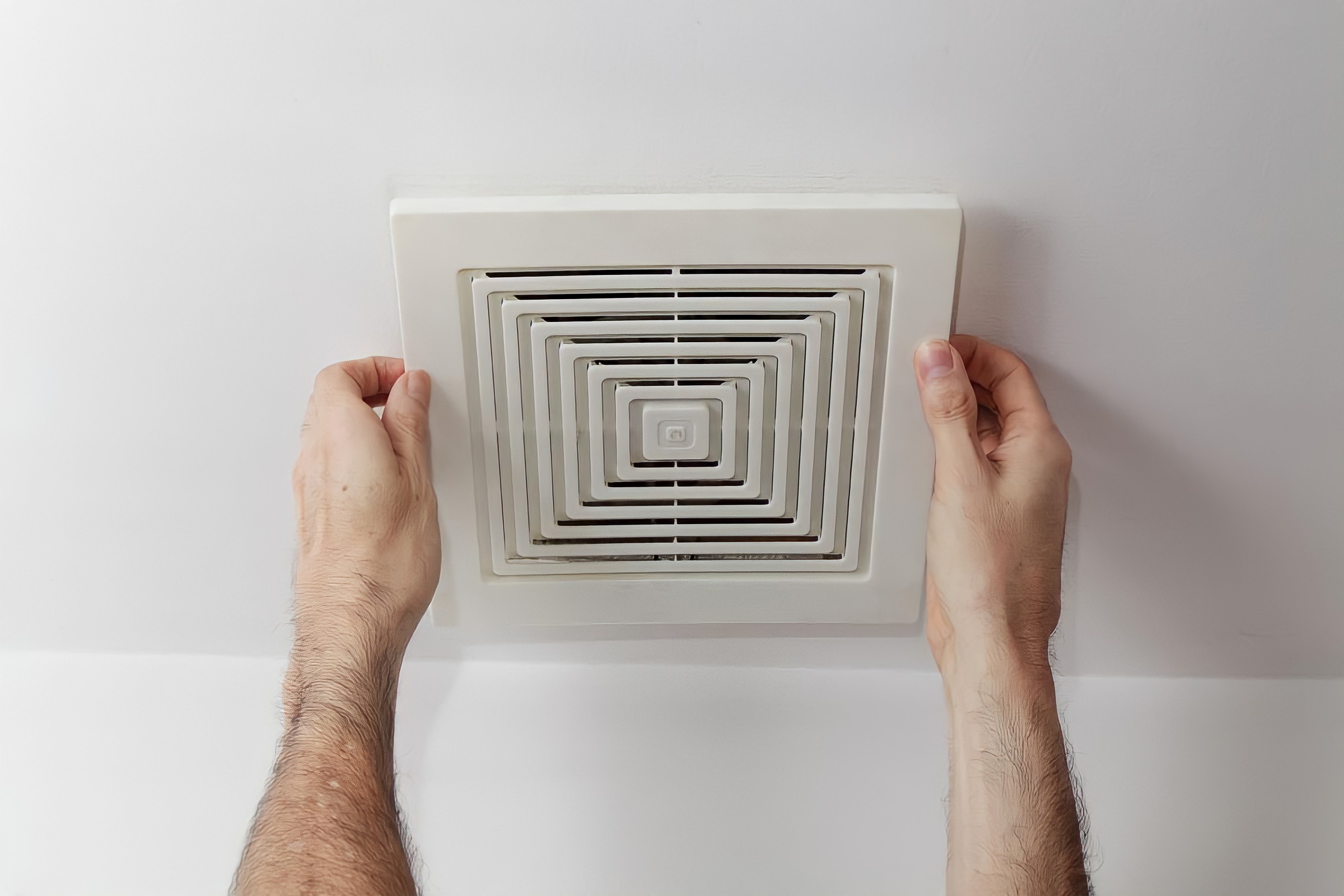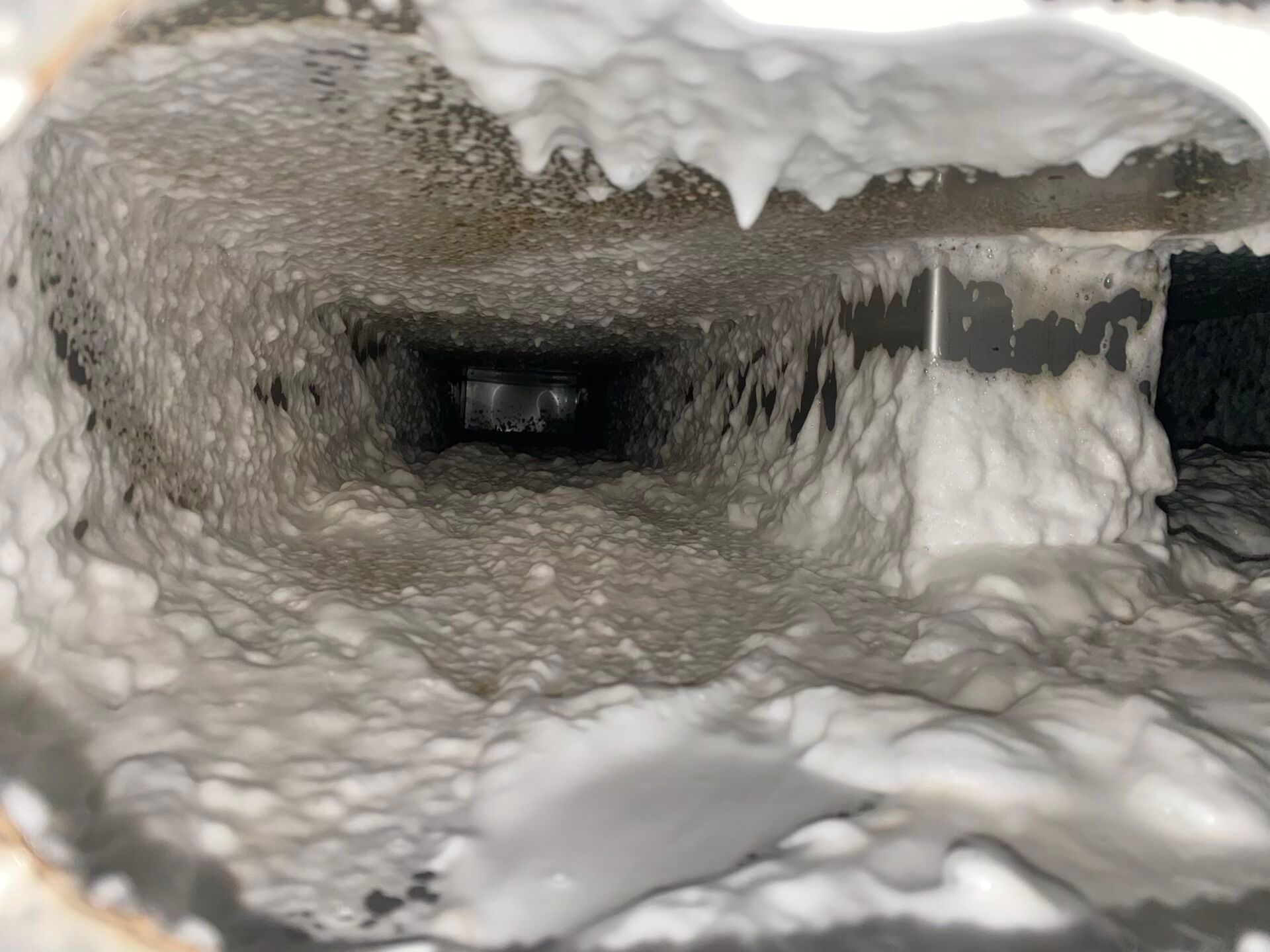Importance of Bathroom Exhaust Vent Cleaning

A clean bathroom exhaust vent is crucial for maintaining a healthy and comfortable home environment. Neglecting this essential task can lead to various health risks and create an unpleasant living space.
Health Risks Associated with Neglecting Bathroom Exhaust Vent Cleaning, Cleaning bathroom exhaust vent
A clogged or dirty bathroom exhaust vent can trap moisture and create a breeding ground for harmful bacteria, mold, and mildew. These contaminants can lead to respiratory problems, allergies, and other health issues, particularly for individuals with pre-existing conditions.
- Respiratory problems: Mold spores and other allergens released from a clogged vent can trigger asthma, allergies, and other respiratory problems.
- Skin irritation: Mold and mildew can cause skin irritation, rashes, and other dermatological issues.
- Eye irritation: Airborne mold spores and dust particles can irritate the eyes, leading to discomfort and potential eye infections.
- Headaches and fatigue: Poor ventilation can contribute to headaches and fatigue due to the buildup of moisture, allergens, and other pollutants.
Impact of Poor Ventilation on Bathroom Humidity and Mold Growth
Bathrooms are inherently humid environments due to showers, baths, and other water-related activities. A properly functioning exhaust vent removes excess moisture, preventing the buildup of humidity that can lead to mold growth. However, a clogged vent traps moisture, creating a perfect environment for mold to thrive.
- Increased humidity: A clogged vent prevents the removal of moisture, leading to increased humidity levels in the bathroom.
- Mold growth: High humidity levels create an ideal environment for mold growth, which can spread to other areas of the house.
- Structural damage: Mold growth can damage bathroom fixtures, walls, and ceilings, leading to costly repairs.
Common Signs Indicating a Clogged or Dirty Bathroom Exhaust Vent
Several signs indicate a clogged or dirty bathroom exhaust vent. Paying attention to these indicators can help you identify the problem early and take corrective action.
- Reduced airflow: If you notice a significant decrease in the airflow from the vent, it’s likely clogged.
- Musty odor: A musty or moldy smell in the bathroom is a strong indication of a clogged vent.
- Visible mold growth: Mold growth around the vent or in the bathroom is a clear sign of poor ventilation.
- Water condensation: Excessive condensation on the bathroom walls or ceiling can indicate a problem with the exhaust vent.
- Loud fan noise: A loud, rumbling noise from the vent fan can signal a blockage.
Steps for Cleaning a Bathroom Exhaust Vent

Cleaning your bathroom exhaust vent is essential for maintaining good air quality and preventing mold growth. A dirty vent can restrict airflow, leading to moisture buildup and unpleasant odors. This step-by-step guide will help you clean your vent safely and effectively.
Tools and Materials
The tools and materials you need for cleaning your bathroom exhaust vent will depend on the type of vent you have. Here is a list of common tools and materials:
- A ladder
- A screwdriver
- A vacuum cleaner with a hose attachment
- A brush or wire brush
- A cleaning solution (e.g., dish soap, baking soda, vinegar)
- A bucket
- A towel
- Gloves
- A face mask (optional)
Steps for Cleaning a Bathroom Exhaust Vent
Here are the steps for cleaning a bathroom exhaust vent:
- Turn off the power to the exhaust fan at the circuit breaker.
- Remove the vent cover. This may involve unscrewing a few screws or simply lifting the cover off.
- Use a vacuum cleaner with a hose attachment to remove any loose debris from the vent and the surrounding area.
- Use a brush or wire brush to scrub the inside of the vent. Be sure to reach all the corners and crevices.
- If the vent is particularly dirty, you can use a cleaning solution to help loosen up the grime. Mix a solution of dish soap, baking soda, and vinegar in a bucket of warm water.
- After scrubbing, rinse the vent with clean water and dry it with a towel.
- Reinstall the vent cover and turn the power back on.
Types of Bathroom Exhaust Vents and Their Cleaning Methods
The cleaning methods for bathroom exhaust vents vary depending on the type of vent. Here is a table outlining the different types of bathroom exhaust vents and their cleaning methods:
| Type of Vent | Cleaning Method |
|---|---|
| Standard Vent | Remove the vent cover, vacuum out any loose debris, scrub the inside with a brush, rinse with clean water, and dry. |
| Recessed Vent | Remove the vent cover, vacuum out any loose debris, use a long brush or wire brush to scrub the inside, rinse with clean water, and dry. |
| Inline Fan | Disconnect the fan from the power source, remove the fan cover, vacuum out any loose debris, clean the fan blades with a damp cloth, and reassemble the fan. |
Preventing Future Clogging: Cleaning Bathroom Exhaust Vent
Regularly cleaning your bathroom exhaust vent is crucial for maintaining its functionality and preventing future clogs. However, even with proper cleaning, preventative measures can significantly reduce the frequency of clogs and extend the lifespan of your vent.
Regular Maintenance and Cleaning Schedules
Establishing a regular maintenance schedule is key to preventing future clogs. Here are some recommendations:
- Monthly Inspection: Visually inspect the vent cover and the interior of the vent for any visible debris accumulation. This allows for early detection of potential clogging issues.
- Quarterly Cleaning: Conduct a thorough cleaning of the vent cover, vent pipe, and the vent fan. This involves removing accumulated dust, lint, and other debris, ensuring optimal airflow.
- Annual Professional Inspection: Consider scheduling an annual inspection by a qualified HVAC professional. They can assess the overall condition of the vent system, including the fan, ductwork, and vent cover, and address any potential issues.
Using Vent Covers or Filters
Vent covers or filters act as a barrier, preventing larger debris from entering the vent system. This significantly reduces the likelihood of clogging.
- Mesh Covers: These covers are typically made of fine metal mesh, allowing air to pass through while blocking larger debris like leaves, insects, and hair.
- Filter Covers: These covers feature a replaceable filter that traps dust, lint, and other smaller particles. Regular filter replacement is crucial to maintain their effectiveness.
“Regularly cleaning your bathroom exhaust vent and using vent covers or filters can significantly reduce the frequency of clogs and extend the lifespan of your vent system.”
